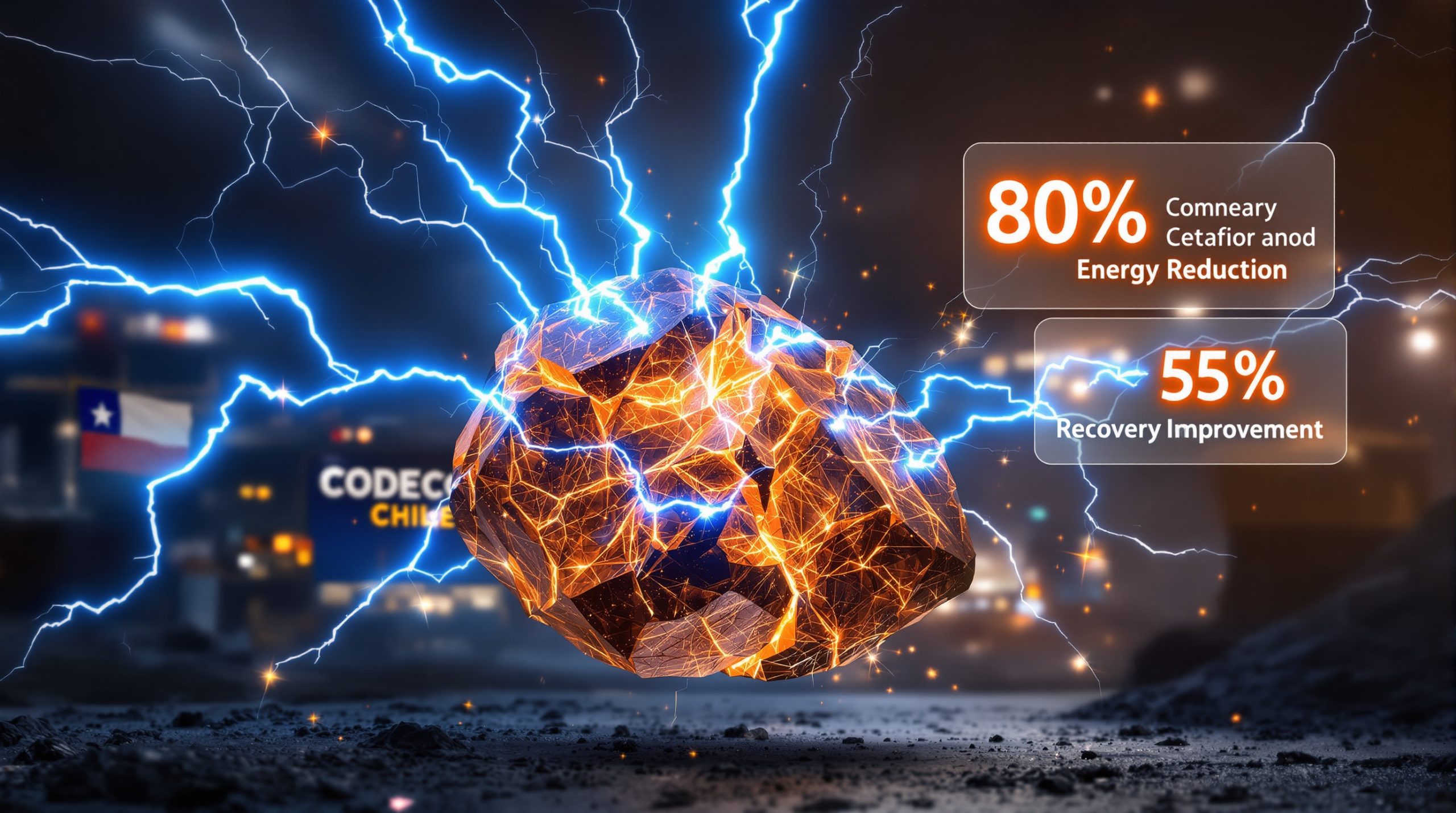Nova Minerals: Shaping US-Australia Critical Minerals Cooperation
Nova Minerals has emerged as a pivotal player in strengthening US-Australia critical minerals collaboration, with its Estelle gold and critical minerals project in Alaska gaining significant diplomatic attention. The company's strategic positioning exemplifies how resource development is becoming increasingly intertwined with international security partnerships and resource diplomacy.
The Alaska-based project represents a unique case study in cross-border investment that aligns with both American and Australian strategic interests, serving as a practical foundation for international resource cooperation beyond mere policy discussions.
What Makes the Estelle Project Diplomatically Significant?
Strategic Location and Resource Potential
The Estelle project, located in Alaska's mineral-rich terrain, has emerged as a focal point for bilateral resource cooperation due to its unique combination of gold resources and critical minerals, particularly antimony. This dual-commodity approach provides both economic viability through precious metals and strategic value through defense-critical materials.
The project's location within U.S. territory but developed by an Australian company creates a distinctive cross-border investment case that naturally aligns with both countries' national security and economic priorities. Rather than simply discussing resource cooperation at policy levels, the Estelle project provides a tangible, operational example of how allied nations can collaborate on securing critical minerals energy security.
Diplomatic Recognition at Highest Levels
The project has received unprecedented diplomatic attention, with Nova Minerals invited to provide briefings for high-level bilateral meetings between Australian and U.S. leadership. This elevation of a mining project to diplomatic significance underscores the growing importance of critical minerals in international relations.
The briefing, requested by the Australian Ambassador to the U.S., will cover production and development status at Estelle, key minerals identified and their strategic applications, planned expansion activities, and ongoing engagement with U.S. government agencies. This comprehensive scope indicates the project's strategic importance to both nations.
How is Government Funding Accelerating Nova's Antimony Development?
U.S. Government Investment
The U.S. government has committed $43.4 million in funding to Nova Minerals, specifically targeting the accelerated development of a fully integrated U.S. antimony supply chain. This substantial investment underscores the strategic importance of securing domestic sources of critical minerals and reducing dependency on potentially unreliable foreign suppliers.
This funding represents a significant shift in how governments approach critical mineral development, moving beyond policy statements to direct financial support for strategically important projects. The investment signals a recognition that private sector mining projects with strategic mineral potential are increasingly viewed through a national security lens.
Production Timeline and Military Applications
Nova is working toward producing military-specification antimony by the 2026-2027 financial year. This ambitious timeline reflects the urgency with which both governments are approaching critical minerals security, particularly for defense applications.
The focus on military-specification antimony highlights how critical minerals development is increasingly driven by defense requirements rather than purely commercial considerations. The production timeline aligns with broader government strategies to secure supply chains for defense-critical materials within a timeframe that addresses current security concerns.
Why is Antimony Considered Strategically Important?
Military Applications and Supply Vulnerabilities
Antimony serves several critical functions in defense manufacturing that make it particularly important to military supply chains:
- Ammunition Production: Antimony is used for hardening lead in ammunition, improving performance and durability
- Flame Retardancy: It provides essential flame-retardant properties for military equipment and clothing, protecting personnel in hazardous conditions
- Metallurgical Applications: The element supports various strategic metallurgical applications in defense manufacturing
- Battery Technology: Antimony is used in certain specialized military battery systems
These applications make antimony essential to modern defense capabilities, while current supply chains remain vulnerable to disruption, with limited domestic production in either the U.S. or Australia.
Recent Addition to Critical Minerals List
The recent inclusion of antimony on the U.S. critical minerals policy list highlights growing concerns about supply chain vulnerabilities and dependence on potentially unreliable foreign sources. This designation has elevated the importance of Nova's Estelle project beyond its gold resources.
The critical minerals designation indicates a formal recognition by the U.S. government that antimony faces supply risks that could impair economic or national security. This classification enables access to specialized funding, expedited permitting processes, and other government support mechanisms designed to accelerate domestic production.
What Does Nova's Briefing Role Indicate About US-Australia Relations?
Diplomatic Significance
The invitation extended to Nova Minerals to brief on its U.S. investments signals a new phase in resource diplomacy, where private sector entities play an increasingly important role in implementing bilateral strategic objectives. This engagement demonstrates how mining companies are becoming integrated into high-level diplomatic strategy.
The briefing role also indicates how resource security has become central to the U.S.-Australia relationship, paralleling traditional security cooperation. Mining companies are increasingly functioning as implementers of strategic national policies, with their operations becoming tangible manifestations of government-to-government agreements.
Comprehensive Briefing Scope
Nova's briefing will cover several critical areas that highlight both the project's importance and the evolving nature of critical minerals diplomacy:
- Production and development status: Current operations and near-term milestones
- Strategic mineral identification: Detailed analysis of antimony resources and other critical minerals
- Expansion timeline: Future development phases and production targets
- Government engagement: Ongoing collaboration with regulatory and security agencies
This comprehensive approach demonstrates how critical minerals development now encompasses economic, security, and diplomatic considerations simultaneously.
How is Nova Positioning Itself Within the Bilateral Critical Minerals Strategy?
Integrated Supply Chain Development
Nova is developing capabilities that span the entire antimony supply chain, from resource identification to processing and production of military-grade materials. This vertical integration aligns with both governments' objectives to secure end-to-end control of critical mineral supply chains.
By developing a fully integrated approach, Nova addresses a key vulnerability in critical minerals security: the gap between mining capacity and processing capability. While mining operations for many critical minerals exist, processing facilities remain concentrated in a limited number of countries, creating bottlenecks and dependencies that Nova's approach aims to overcome.
Dual-Commodity Strategic Value
While antimony has emerged as a focal point for strategic cooperation, the Estelle project's substantial gold resources provide economic foundation and diversification. This dual-commodity approach enhances the project's viability while serving national security interests.
The gold market analysis component ensures the project's economic sustainability independent of government support, while antimony production addresses strategic needs. This balanced approach provides a template for how critical minerals projects can be structured to meet both commercial and national security objectives simultaneously.
What Does This Case Reveal About Changing Resource Diplomacy?
Private Sector as Diplomatic Actors
Nova's experience demonstrates how mining companies are increasingly functioning as quasi-diplomatic actors in implementing strategic resource policies. Their operations become tangible manifestations of government-to-government agreements on resource security, moving beyond traditional business roles to serve broader national interests.
This evolution reflects a deeper integration between economic and security policy, where private enterprises that develop strategically important resources become extensions of national policy in practice. The diplomatic attention given to Nova illustrates how resource companies can become central to bilateral relations when their projects align with strategic objectives.
From Policy to Practice
The Nova case shows the evolution from high-level policy discussions to concrete operational collaboration in critical minerals. This practical implementation phase represents a maturing of the US-Australia critical minerals partnership.
While policy frameworks and memoranda of understanding have established the foundation for critical minerals cooperation, Nova's Estelle project represents the translation of those policies into operational reality. This implementation phase brings new challenges and opportunities that test the robustness of the bilateral relationship and can inform future policy development.
How Are Critical Minerals Reshaping International Relations?
Beyond Traditional Alliances
The focus on critical minerals is creating new dimensions in established alliances, with resource security becoming as important as traditional security cooperation. This shift is evident in the diplomatic attention Nova's project has received.
Critical minerals cooperation provides a practical, economic dimension to security alliances that have historically focused on defense and intelligence sharing. This economic security aspect creates additional bonds between allied nations and provides concrete mutual benefits that strengthen relationships beyond conventional security arrangements.
Economic Security as National Security
Nova's experience illustrates how economic investments in resource development are increasingly viewed through a national security lens. This perspective is driving unprecedented government support for private sector mining projects with strategic mineral potential.
The concept of economic security has expanded to encompass supply chain resilience, resource access, and industrial capacity as core national security concerns. This expanded definition has elevated critical minerals development from a purely commercial activity to a matter of strategic minerals reserve interests, worthy of direct government investment and diplomatic engagement.
What Challenges Remain for US-Australia Critical Minerals Cooperation?
Processing Capacity Development
While mining capacity exists in both countries, significant challenges remain in developing domestic processing capabilities for critical minerals. Nova's integrated approach to antimony production represents an important test case for addressing this gap.
Processing facilities require substantial capital investment, specialized technical expertise, and often face more complex environmental permitting processes than mining operations. Developing this mid-stream capacity represents perhaps the most significant hurdle in establishing secure, domestic critical mineral supply chains.
Financing Large-Scale Development
Despite government support, securing sufficient capital for rapid development of critical mineral projects remains challenging. The scale of investment required for full supply chain development exceeds typical mining finance parameters.
Critical minerals projects often face:
- Higher capital costs relative to conventional mining projects
- Longer payback periods for specialized processing facilities
- Market uncertainty due to concentrated buyer bases
- Competition with established, lower-cost international suppliers
These financing challenges require innovative approaches that blend private capital with government support mechanisms, such as the funding provided to Nova's antimony development.
How Might This Partnership Evolve?
Template for Future Collaboration
Nova's experience could serve as a template for future US-Australia critical minerals projects, establishing practical mechanisms for government support, regulatory alignment, and strategic antimony financing. The lessons learned from implementing this project can inform policy development and create more efficient pathways for similar ventures.
Key elements of this template may include:
- Streamlined permitting processes for strategic resource projects
- Coordinated government investment across different agencies and countries
- Integration of private sector expertise in policy development
- Formalized roles for resource companies in diplomatic engagement
This evolving model could accelerate the development of secure critical minerals supply chains across the alliance.
Potential for Multilateral Expansion
The bilateral cooperation demonstrated through Nova's project could potentially expand to include other like-minded countries seeking to secure critical mineral supply chains, creating broader international frameworks for resource security.
Partners such as Japan, South Korea, Canada, and European nations share similar concerns about critical mineral dependencies and could benefit from joining an expanded cooperation framework. Such multilateral approaches could create more resilient supply networks, distribute investment burdens, and leverage complementary capabilities across a broader alliance.
Nova as a Catalyst for Resource Security Cooperation
Nova Minerals' Estelle project exemplifies how critical minerals development is becoming a cornerstone of US-Australia strategic cooperation. The unprecedented diplomatic attention and government support for the project highlight the evolution of resource security as a foreign policy priority.
As antimony production advances toward military specifications by 2026-2027, Nova's experience will likely inform future critical minerals collaboration between the two countries and potentially shape broader international approaches to resource security. The project demonstrates how mining companies can become integral to national security strategies, operating at the intersection of economic development, resource diplomacy, and defense industrial base security.
The $43.4 million in U.S. government funding for Nova's antimony development represents a tangible commitment to securing domestic supply chains for defense-critical materials. This investment indicates a recognition that critical minerals security requires not only policy frameworks but also direct financial support to accelerate development timelines.
Looking forward, the Nova Minerals and US-Australia critical minerals talks suggest that successful critical minerals projects will increasingly blend commercial viability with strategic value, creating balanced approaches that can sustain operations while serving national security interests. As this model matures, it may provide a blueprint for how allied nations can cooperate to reduce dependencies on unreliable suppliers and secure essential materials for both economic and defense applications.
Want to Stay Ahead of the Next Major ASX Mineral Discovery?
Discovery Alert's proprietary Discovery IQ model delivers real-time notifications when significant mineral discoveries are announced on the ASX, helping you identify actionable opportunities before the broader market. Visit our dedicated discoveries page to understand why historic discoveries like De Grey Mining and WA1 Resources generated substantial returns for early investors.




